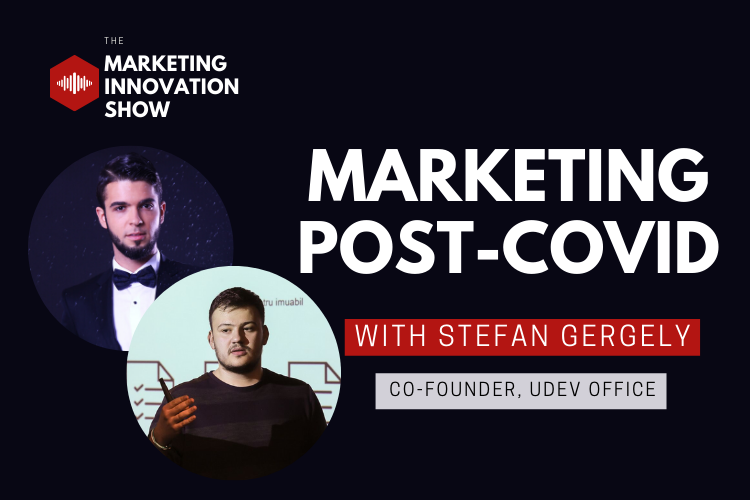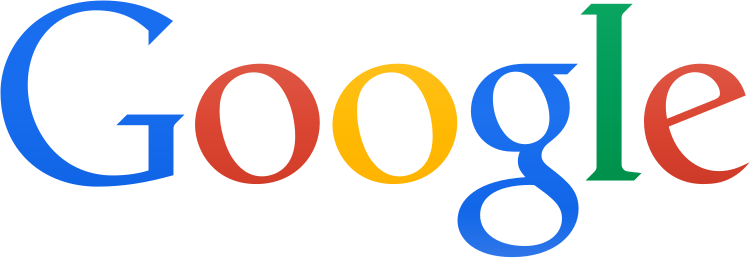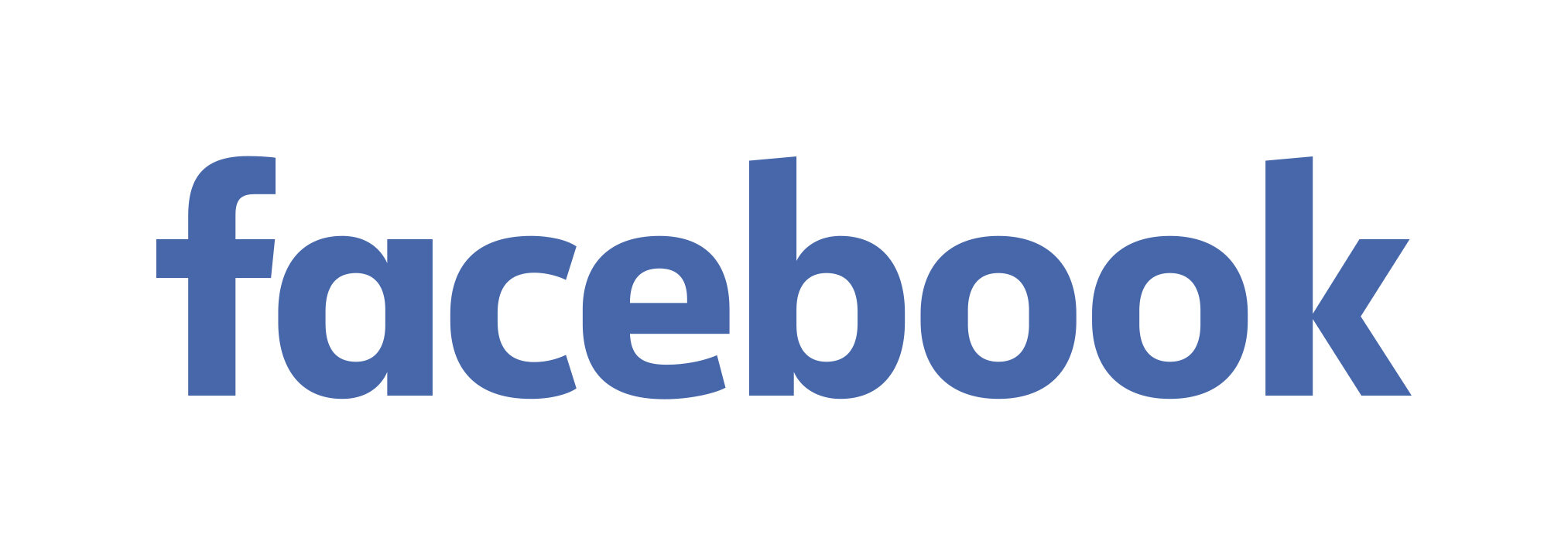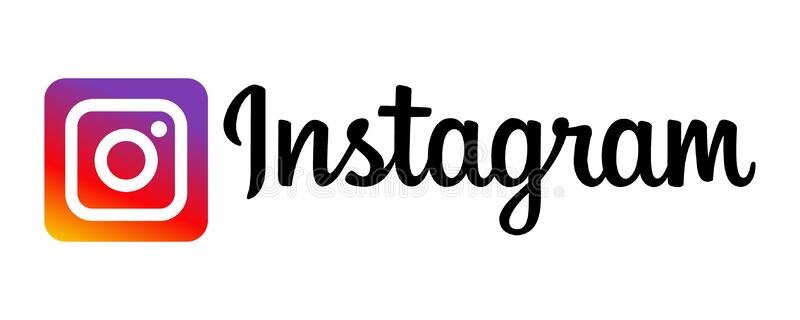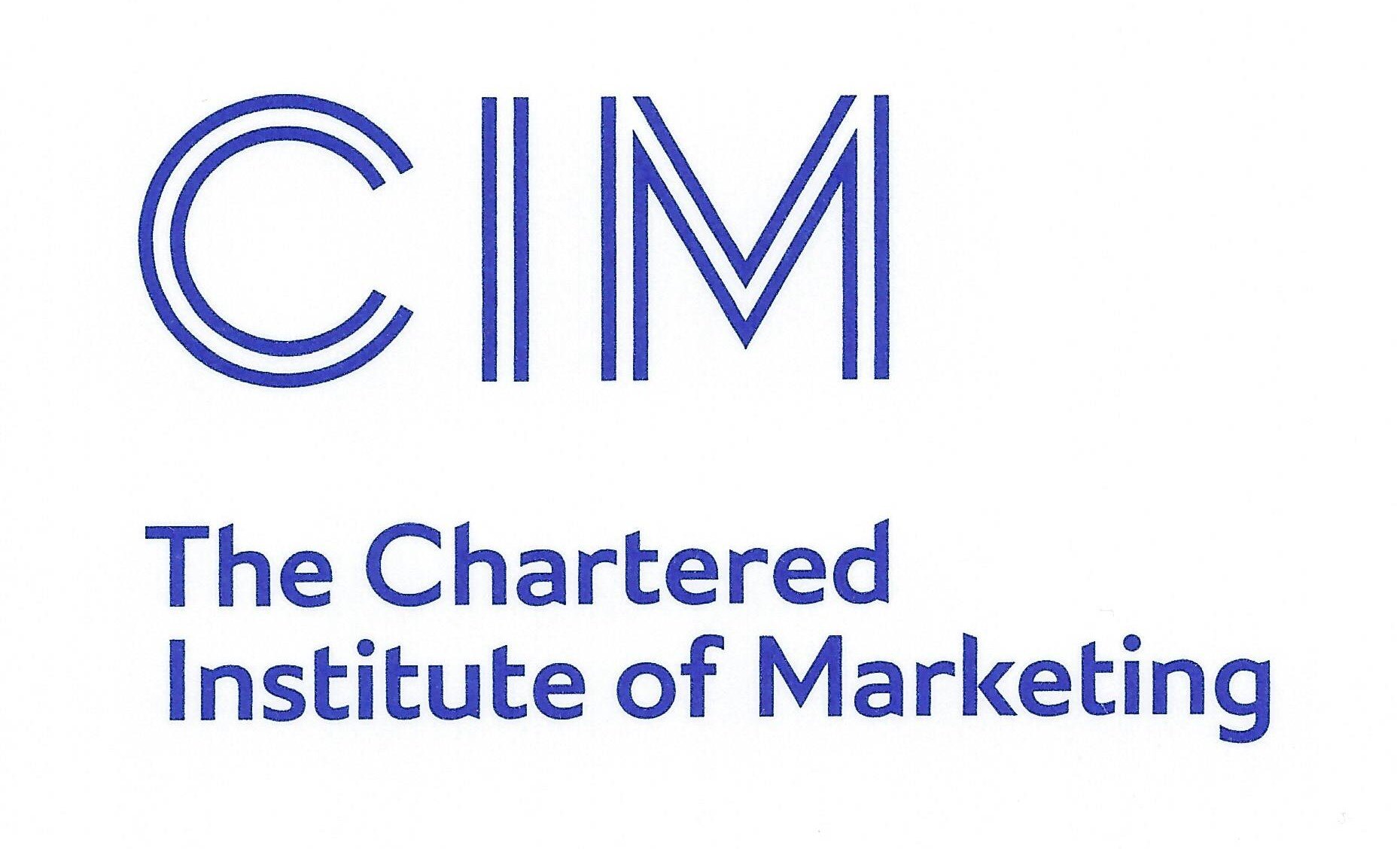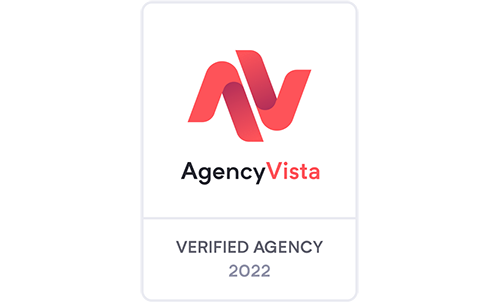HELLO EVERYONE! WELCOME TO another episode of THE MARKETING INNOVATION PODCAST SHOW!
Today’s episode brings Stefan Gergely for the second time on The Marketing Innovation Podcast Show. Stefan and Andrei will be focusing on how Marketing channels and tactics can be changed post-COVID and how this might affect the traditional Marketing Mix, the traditional ways of advertising and so on.
Stefan is a partner in Under Development Office - a product-oriented development agency, focused on mobile technologies, web technologies, cutting-edge technologies, being one of the first companies in Europe to develop blockchain technologies as a service. Stefan founded Aurus.io, a fintech company that built a 100% gold-backed cryptocurrency and ATA, the Romanian Association of Advanced Technologies as well as other tech startups where he works on Product and Growth The latest venture he’s embarked on is Dime.ly, is a data platform that enables people to transparently monetise their data and very easily promote their businesses, even for free.
If you want to listen to this episode instead of reading about it, choose your favorite platform:
You can also watch the episode on YouTube:
let’s dive into this episode!
Andrei: Hello, everybody! This is Andrei. Welcome to the Marketing innovation Show. Today with us we have Stefan Gergely. He's one of the best tech and blockchain guys I know. I'm super happy to have him on the podcast again. Welcome back, Stefan. How's it going?
Stefan: Hey, man, I'm all good. At home still the shaved head, as you can see, how are you?
Andrei: Very good, very good as well. Just had a very pumped morning and now back in business with with the podcast and I'm super, super excited for our episode today. So just for the people that maybe haven't seen already the episode that we did back in the day, tell us a bit about you and about the ventures that you're on the adventures that you embarked on recently and what are you involved with at the moment?
Stefan: Sure. So one of my starting points was being a partner in Under Development Office. That's a product Oriented Development Agency. We're focused on mobile technologies and web technologies, but I think one of the things that really sets us apart is our focus on cutting edge technologies. This is why we were one of the first companies in Europe to develop blockchain technology as a service. And that got us to grow quite quickly with clients all over the world. And that's the niche that we're best known for right now.
And I'm also stepping into all sorts of ventures because I think as a as a hustler in these days, you can't just have one job. And right now, the latest thing I'm embarking on is with a friend of mine over the channel, we're starting a company called Dime.ly, it's a data oriented company. We're making a platform where people can transparently monetize their data, and advertisers are hustlers can can promote their business in a data oriented manner really, really quickly and really easily.
Andrei: Super cool. Okay, so just to let everybody know what we're gonna be doing today, because it's a bit of a more different type of episode than we have traditionally, or that maybe you guys are used to. So as the as the title says, today, we are going to be focusing on how marketing channels and tactics can be changed post-COVID and how this might affect the traditional marketing mix. But rather than just talking about it, what Stefan and I are going to be doing is put our entrepreneur hats on, as well as the marketing and tech knowledge that we have together. And we will be starting with a brainstorming session.
This is something that we haven't done before or anything like that. So it's happening while we're on that 100% here. And from that brainstorm, where we're going to be discussing technologies, what's cutting edge today, and how these might be turning out. In a couple of months, in terms of mass usage, from here, we'll be making some scenarios and trying to guess the things that might be happening a couple months down the line, as well as how brands could tap into these potential trends today, so that they can get a competitive advantage in the market.
Let's, let's make a start on it. Stefan, I think that a good place to start would be maybe to talk about the mobile consumption, mobile technology, this is something that you have loads of experience as well in. And I think that we can, we can start from this as a basis because we already know this has been growing loads over the past few years. Let's see where we are really, at the moment.
Stefan: I think at the moment, like specifically at the moment when we're recording this, we're in like a pause state. We're in a time in which everyone can just lay back for a bit everyone wants to lay back. Everyone wants to take advantage of this quarantine, apart from the very few outliers who are using this time to perfect certain skills and some knowledge and the hats off to them.
I think most people are just seeing that we have some period of time in which everyone can just chill out. And everyone's taking a break from things so that's why Netflix numbers are booming, TikTok numbers are booming, but it's heavily consumption of content oriented people just want to hear stories I don't think they really want to be sold stuff. Of course, online businesses have grown in a very have grown slightly because people do buy stuff out of boredom at home, but I wouldn't say it's like a mass trend of let's just buy everything we can so sweet, an online sweepstakes, of sorts. But, of course, that's bound to change. Soon there's a gravity towards people doing things except people are not going to just do just sit around. Do nothing forever. So I think this is a great window of opportunity to take the time, like we're doing right now just to just brainstorm how the future is going to look like. And yeah, this is going to be a brainstorming episode.
I think this is a great time for people for companies to reevaluate how they've been investing their money, since a lot of budgets are being cut right now to, you know, to make sure that there's liquidity over the long run. I also think it's a great time for people to review their budgets, review their investments, and in a marketing standpoint, as I think you mentioned to me in a discussion that we had, it's a great time for people to reevaluate how their marketing efforts and how their ROI is looking.
Andrei: Yeah, I think that's the right spot. And I think that, let's see, let's see where the discussion goes. Because as it happened before, I don't think there are going to be so many moments because I think we have some very, very nice debates on this subject. But let's start with mobile.This platform has been growing loads. Is mobile used enough or to its maximum capacity from a technological point of view?
Stefan: Well, what do you mean by mobile specifically?
Andrei: I think that the way that people started to consume content, as well as the amount of content that they consume on different platforms has been impacted a lot by this lockdown, as well as remote working. Also, from my agency perspective: working with clients every day, I see that many of them started to swap budgets, cut some of the budgets as well as move them to different channels of work, for example, moving offline to online and seeing how they can distribute better ads in a more targeted way. And some of the ones that weren't already started to look into the personalization of ads and how this can benefit their marketing.
I think that a good direction for us to start brainstorming would be to see which channels have been impacted the most, and then to see which technologies could be used better to make the process of delivering ads and content more effective.
And now I'd like to start with one of the things that we as marketers were expecting from our clients: everybody had their offline budgets, and we were expecting them to move into online and have a massive inflation here. But this is not exactly what happened. In March, when this whole thing started, the online budgets remained kind of the same. We expected them to grow, but this was not necessarily the case: looking at the cost per conversion and purchase, cost of acquisitions and so on. So these sort of metrics that show the competitiveness in the market for specific keywords or for specific industries, we actually saw a slight drop over the past two weeks in terms of the cost per action and so on, which basically indicates that in some spaces, so for example, specifically, let's say Romania, the market has not been so competitive in this in this period, which is a very good opportunity for brands to tap into the digital channels and get some advantages from here. But also another thing that I think people should remember is that there is an economic danger attached to this whole situation, and people started to be more conservative in the way that they make purchases and spend money in general.
Stefan: That would be an argument for the price of ads going up for the cost of action, so to speak with the conversion, whatever you want to call it.
Andrei: Which one?
Stefan: The fact that there's less buying power, theoretically. I think the fact is that there was not less buying power, yet there might be less buying power in the future, like in the near future. So far, people are like: alright, it's the beginning of this party, let's buy whatever we need to stay at home and buy it online. Many merchants advertisers did not get a chance to truly move their budgets. I also would have expected the price to go up like immediately.
Andrei: Yeah, one thing that I saw a lot of, but maybe it's just because I was targeted by it, was a lot of online courses. And in learning, I think that this is the sector that has seen a massive increase in the budgets here because everybody saw an opportunity now to push courses and to push trainings and so on. This sector might be one of the ones that saw a higher cost per click, cost per lead and so on. For example, in Ecommerce, the lower cost per purchase is probably due to people just being indoors, not spending money anymore outdoors.
Stefan: They were going out clubbing and spending money on that, but now they're not, so yeah.
Andrei: During lockdown, people saw a different way of living and doing the things that they were traditionally doing anyway. They do the same thing that they were doing in an office, but from home. So once they get used to doing this from home for two months, let's say, it is gonna be probably very hard for them to start going again, every day to the office. And usually this commute time wouldn't be a time where many advertisers would be pushing budget.
So for example, on Social Media when we were publishing posts, some of the bigger advertisers were concentrating a lot of their budget on the times when people are on the tube or are driving, because everybody knows that people, when they're stuck in traffic, they stay on the phone unnecessarily or look out for billboards and outdoor advertising. So I think that the effectiveness of some channels, and the traditional ways of advertising during specific timeframes, they're all going to be affected. One of the points would be that maybe because this was valued in the past as well that people when they were outdoors, they weren't interacting, they were always staring at their phones. The ways that they will consume content on Social Media might be different not having that commute time. And then maybe advertising shouldn't be looking at adjusting the timing of their ads module thing.
Stefan: Yeah, that's what I mean - that's definitely an insight that you would have, not me. It kind of creates an idea that we need to analyze all of these sort of micro-trends, micro-behaviours like what's gonna be the new ritual. You had these certain sets of things that you would do. And so it's a therapeutic process, in a sense for many people that have managed to master the process of the community, because for the ones, for the others, they just get unbelievably stressed. We destroy their day only to do it on the way back again. And that defeats the purpose. They're going to be happy right now because they can stay humble. They're going to have their own little things. They have the podcast they can listen to at home while making coffee. It's these sorts of things are going to be micro-trends that have retailers are going to need to look out for.
I like being in the office, I like talking to people that are the developers that I work with, I have a daily call with our developers and it gets to me, you know, like I'm sitting behind my computer. I hang up and I go, that could have been it. It's more efficient in a sense, because the talkative people because of how the connection works in a team call, they can't talk as much as they would before. You always have talkative people in teams and they can't talk as much because they can't get the message across.
So it's more efficient in a sense, but I think over the long run, having a person to person contact and discussing issues that people come up with is better for team strength and these sorts of factors. I don't think I think there are going to be some people out there just like I am at the office that will happily take the view, once the fear of this virus is over, of course.
Offline advertising is definitely not going to disappear completely. And I think this is a good opportunity to take a look at it because I felt that it's always like certain, a certain something, you know, it's just so simple.
Andrei: Although one thing that I saw, it was like a study done in China. As a disclaimer, I don't have too much insight into the Chinese marketing world because it's working a bit different. They have WeChat, and it's like brands are communicating much more different than they are in America or in Europe. I was reading and I saw a little sort of your insight that they have started to develop advertising on two screens and that they are that are identifying people by their mobile devices and are able to share data with their mobile devices and therefore deliver ads that are relevant to those people based on the brands that they have interacted on WeChat with. So I think that that's some next-level tactic. Have you heard about it?
Stefan: No, I haven't. But that's the direction I would go. I would say that anyway. But it's just the start, because the thing is the only thing we're doing by targeting physical ads, targeting offline ads to people that look at them, based on some technology like this. And I don't think that they would target the individual because it's impossible. I think they would make an average of the people that are closest to that ad and serve an ad that's closer tailored to that audience. So it's not as efficient as an online ad, where you can serve a different ad to each individual, should you think that that's the should an algorithm dictate if that's the case?
Stefan: You could filter it out through a certain AR technology, for instance, and use look at the ad through your phone, the physical ad, while you're looking through a camera, but you can see something different than everyone else around. Although, the whole purpose of an offline ad is to stumble upon it and see while you're doing something else, not purposely take out your phone pointer, read your ad and so on. While it may sound nice, and I'm quite sure there's gonna be a start-up out there who thinks that that's going to be a thing, it's not gonna be like I have that on the record. Now, I guess that I said it.
Andrei:But although there is in Romania a company that is trying to develop and to integrate this sort of analysis on customers data and facial recognition. They have mounted cameras in a couple of places also in Bucharest, and if I'm not wrong, one of them is in the tube, add in unique Square Station, one or two actually. And they are analyzing or using Face Recognition mechanisms to aggregate data, gain insight into the audience and then teach the advertisers that are distributing ads through them. What ads should they be delivering at which points during the day so that they are as relevant as they could to the audience and I think that that's, for example, one upgrade of the traditional let's say, outdoor advertising is definitely not as advanced as the Chinese stuff? But, Isn't this the sort of technologies may be potentially, or feasible in today's market? In terms of the actual logistics and implementation is the world ready for them?
Stefan: I think this is where it needs to start. Because the thing is in, in advertising, as I'm learning with Dime.ly, is you need a lot of data. Like you need a lot, a lot, a lot of data. So the sooner we start processing it, no matter how raw it is, no matter how good it is, the better. And it's gonna be better for the consumer. Because at the end of the day, because there are going to be there are companies out there that do actually just want you to see and if you're going to see an ad, they want you to see an ad that's, that might be relevant. You've gotten to the stigma that we hate ads, so to speak, a stigma which I understand to a large degree. I mean, I was so happy when YouTube premium came out, because I could no longer suffer to see 2 video ads of some video game where there's just loads and loads of useless explosions on the screen I couldn't stand anymore so I was happy when YouTube Premium came out.
Andrei: And Spotify as well.
Andrei: There are definitely advertising companies out there that genuinely want serve the best content that they can for you. And for that they need data.
And that needs to start soon. I think that people are going to have to start getting used to these sorts of things anyway, that's the only way we're going to get rid of this stigma and just getting used to the fact that you're right, we are going to be recording certain actions, as long as we use a proprietary - so as long as we use the technology that can guarantee some form of transparency, or some form of security behind your data and technology like blockchain, for instance. I'm not trying to promote it like ”you're done because it's already done” - no. But the technology that guarantees that people's data is held safely and transparently and they know what advertisers are getting, so they're not getting my name, or whatever.
I think that's going to be very important in reducing the stigma forward and to be able to serve you and much more in-depth advertising experiences. This is one of the points that I wanted to touch on within this brainstorming.
I think we're going to need to go much deeper into ads and storytelling into creating universes and into pushing them across different platforms in a way that makes sense.
Right now, think a little bit about how basic so many advertising campaigns are, like the majority of them out there in the world. I generally don't understand. For example, those mobile games that I was talking about earlier. They push millions of dollars into really senseless ads. A creative, innovative agency could do something amazing like they could craft the universe of ads with stories and characters and whatever you want. And I think what were the offline world of ads is going to move towards, apart from of course getting these reactions what else tailoring ads towards certain communities of people based on who's passing by with technology like, like beacons, I think what they should be doing is also building upon their other ads that they have in other places. But it would be cool for me to see instead of an ad, as a video ad on YouTube, for instance, that is where I know that I have to watch at least I know how long, five seconds, five seconds is something that I would like to see in the real world, a continuation to a short sort of cinematic or story that was started for me that before. And if you have if that means actually promoting your product in the third one, in the third ad, which I might see after a week or two somewhere else, it might end up based on some calculations much more efficient than just say, you'll buy this it's cheaper and it's better for you right now. Just do it. Just go just do it now.
Andrei: Oh, that'd be actually a basically one to one market. So, you know, understanding how each customer received your ad and consumed your ad and when they saw it, and then automating the next step, always all being part of a story, right? So every customer sees kind of the same story that you want to be communicated, but sees one point at the right time. So you know, like, not see this third, unless they saw it first and second, right. So having a certain sort of storytelling. Yeah, I think that'd be a really interesting. One question that is gonna be I mean, I know that is a problem now. And a question that to be addressed is, how are brands going to be able to manage their databases and the data that they hold of customers and the different data from different platforms in a singular point so that they can use that effect effectively to achieve this more data digitizing?
Stefan: There already are platforms for that.
Andrei: Which ones? Do you know are doing a good job at this?
Stefan: Google.
Andrei: Oh, yeah. Well, I mean, we've got a Facebook, okay. But like seriously, Google - I think you can tap into with their new Firebase based tools. And they're really cheap API's and stuff like that.
Stefan: I think you can store data quite easy. I'm not saying it's easy as in anyone can do it themselves. You might need an expert, you might need a tech guy or a marketing guy, something like that to be able to set up a database where you can push data from all sorts of sources - Google's genuinely a good place to do that. Now. Of course, if you're working lower level in the ad space, there are a lot of protocols used in the advertising world to move ads across it to keep client data and customer data. You can integrate these within Google or any other tool that you have like this is the lower level is this goes deeper, and they're really complicated things. But they exist for a reason: they track how much time a person views an ad, the type of action, you can tap into all of these data sources. They're huge. And they're a standard across the advertising world. That's the cool thing. They're a standard.
Andrei: Looking at the campaigns that we run for people today, I'm trying to link this part of marketing with the things that are happening more at the moment to see how this can be scaled, or it can be adapted to a more digital world. At the moment, some of the more mainstream campaigns that we run for people are, for example, if we take social it would be through the AIDA model: so Attention, Interest, Desire and Action. We try to take customers through that by having automation rules for delivery and then, for example, targeting people with specific advice on how much of a video that they watched before, and then creating sort of a funnel-like that. And then also we have Google then where we have affinity audiences, and we can target people based on what they searched in the past week, or what interests they have a page and so on. And another thing for social would be, for example, targeting people that aren't that expressed or have done specific actions in the platform such as press on buttons, like shop now and so on, which are seen as being engaged shoppers. So Ecommerce does very good. And it's a nice trick to actually make your delivery more efficient. But then, where the challenges is capturing all the relevant data from Google, and then understanding how the same customers interacted, for example, on Facebook, and putting these two together in order to make sure that you have a cohesive journey on Google and Facebook, let's say because email marketing that can work, and that usually is capturing data from email and the way interacting with your brand on specific platforms. But then again, each data table has a unique key ID and that's what a customer is that being identified on. And generally at the moment, that unique ID is an email address. If I'm not wrong, I think that Google does the same for customers, and I think it's by their email address. So do you have any ideas of how we might be able to integrate your data better or for your research for Dime.ly, you find some gaps that can be filled or?
Stefan: One thing that we want to do with Dime.ly doesn't take this in a certain sense. I don't think that right now we help with the overarching of the existence of all of these platforms. But one thing that we do want to do is make serving ads much easier to understand or to do. That's why we set out to do everything with a single screen. That's what you promote. So you can take a screenshot of a post that you've made on an Instagram story for your business and upload it directly and run it as an ad. And you can run it as an ad for free. And then our algorithms will see based on people's reaction to that ad, we'll find you a target market that reacted best to your ad or to your product. Now, there are discussions about being able to plug in loads of other advertising platforms into Dime.ly and whatever it's going to whatever platform allows you to tap into these multiple sources they have of extracting data that you can use in a single place. I don't use anyone in particular now. I don't use any platform that allows me to basically oversee a Google ad campaign or a Facebook campaign.
Andrei: Yeah, I try to do that. But the last time we were discussing with them, they haven't really achieved it to that level.
Stefan: It's definitely not easy because of how much Google and Facebook want to protect all of these things. But I think, if I'm not mistaken, that should be something that should be done before that layer. So before you actually set up an ad campaign on Facebook or on Google, you should have your target markets, all of these things, and the only thing you extract are the results, like how well it worked for a certain segment, and then you can optimize for that.
Andrei: But then, again, how do you automate the storytelling for that? So I mean, you know who your target market is, that's okay. And you know how it looks as a segment. How do you achieve the one to one marketing so that you can create a funnel of ads based on what they consume?
Stefan: Oh, there's no way that's done yet. For sure. Because it's not a need, yet. Try to figure out how they can optimize their pixel to sell a little bit more. And that's like really the 3d instant gratification type of things. What I'm talking about is going to first be experimented by big companies who can afford the risk of not selling within the first advertising campaign in order to build up in generate, hopefully, more sales in latter ones. But in order to be able to pull that off, one thing I know for sure is that the infrastructure is there. Like fundamentally the tools that Facebook themselves or Google themselves to use to serve ads across different channels across different websites. They are performant enough to be able to handle an advertising campaign that's done one to one across multiple platforms towards different people. But it's just not a feature that's sold yet. I think that right now you would have to do it manually.
Andrei: We are an agency that takes care of it for you. All these funnels usually are being integrated, as you said manually. So now let's let's move up now and try to have like a bird's eye view on the discussion because we went into the the detail. Let's take a look at the market. Traditionally, before COVID, we had, obviously brands that were continuing the same approach to marketing, mostly as they did, let's say, two or three years ago, in a market that was already changing a lot and innovating a lot. Obviously, we had the more corporate brands that could afford to lose some budgets to test but also they were not adaptive enough in order to change to different other platforms that they would pick.
Right now, what is likely to happen over these months, let's say April to May, is that the digital space eventually will be flooded with loads more advertising. Loads of brands might just be doing what they were doing traditionally, just like pushing guides and say: buy this without having the sort of funnel strategy to deliver advertising.
Apart from an increase in the cost per delivery, cost per click or whatever the metric is that a brand following another risk would be for people to start getting enough of these ads that don't serve a real value and then to build up this resistance and have this stigma against seeing ads.
Stefan: Yeah, definitely. That's one of the reasons why the first version of Dime.ly, Tinder, likes ads. Because we get the right to say that: How do you know that people have not had enough of watching ads in general, so your ad is going to be seen, but people are so sick of seeing ads they're not going to react to it. Whereas we serve ads in a place where people literally open an app, literally to see ads. That's the purpose for them opening this app. The reason why these people open this app is to get ads that are as tailored as possible to them, and they have a financial incentive, especially at the beginning to do so. So we get a hedge on all of this. And we get to say that doesn't matter for us, because people only come to our app to see ads. As for the fear or the how we will evolve into in the mainstream advertising marketplace, I think you're completely right, the first thing that's going to happen is going to be an increased cost of whatever metric is relevant, because there's going to be a flood of new ads. And then, people will start being sick of ads, but the increase of cost elevates the barrier of entry. So the increase of cost is going to create a likely scenario that there are going to be fewer ads. That's what an increase, of course, does economically. So there's going to be a flood of ads, then the increase of cost, then the flood kind of reduces, because it's much more expensive to run an ad.
Andrei: But because it's a marketplace, because the price only increases when the budgets are pumped into the platform. If the budgets are not there, then the price drops.
Stefan: Yeah, I agree. There's always an up and down, up and down scientists. But this is why I think the discussion that we're having at the brainstorming, and that we should carry on each of us to ourselves as well and everyone at home. All right now there's going to be a flood of people moving towards online advertising, that price is going to go up. And then, of course, it's going to be too expensive. For some people, it's going to go down but then up again, because that's, that's what we're currently dealing with. This is where we need to think and turn this into a positive-sum game. First of all, platforms like Google or Facebook figuring out new ways to show these ads in a place where they have no competition before, or turning them smarter, making them more efficient, or new players coming in and figuring out new ways to serve ads. The company that wants to serve ads within Netflix shows that are tailored to people, right? That's a positive-sum game all of a sudden, that's a new place where you can serve an app. If, for instance, the ads that are going to be served by Google, it will help in making the cost per deliverable cheaper, because they're more places even for Google to show ads. It's a new marketing for Google. And that's fine, the outcome will be the same. Well, Google's going to have an incentive to keep the cost as high as possible. We need to be thinking what are these new opportunities, new places to advertise things to people?
Andrei: Yeah, going back to the consumption behaviour and stuff, I think that you mentioned, the routines are going to be replaced and, for example, will not be commuting anymore or would you carry on their day to day life in a slightly different way? First of all, I'm happy to see more people being more involved with having a meditation routine or doing some sort of sport like yoga or maybe jogging a bit more. So you know, they're following YouTube or buying courses. Brands trying to tap into that in a nice manner some sort of product placement, like advertising in these new routines would be nice to happen.
Stefan: Yeah, but the true question is: How? What's your routine? What do you do now? What do you do in the morning?
Andrei: Wake up. It takes like five minutes to wake up. Brush my teeth, then meditate for 10-15 minutes. Breakfast. I'm usually quickly going for the news related to the market and stuff, but that's like five minutes. So that and then going into it so I'm not doing sports in the morning. At around 8:30 I'm going on email, Slack and starting to get the day started. So one way that potentially could be good or an opportunity to advertise better: let's say that you are a B2B services or financial brand type of business and you are advertising through display ads, placing the display ads in a programmatic way during specific times on the specific websites that are relevant. But you know, in a more intelligent when programmed way, that could be an opportunity, even though I'm personally not a big fan of hearing a little, or seeing a little ad in my app when I am opening it for meditation purposes. So maybe these sorts of things are good because I'm not watching TV, and I'm not watching YouTube in the Morning.
Stefan: One thing that we're discussing is finding a way to make micro influencing more mainstream and more of a standardized means of promoting things. And I realized that this fits in perfectly into this part of the discussion, because let's face it, serving as a Wall Street's Journal is something that people are already going to be doing. It's something that the algorithm is going to be doing itself because they're going to figure out that point of the surge of traffic is changing. So nothing really needs to change for that to happen. But you were talking earlier about product placement. I think right now the biggest problem with product placement is how much of a thing it is: you need 50,000 million disclaimers that you're doing product placement. And then, companies are so desperate to do product placement because of all of these procedures, which increased the cost of product placement campaigns to run as a company, companies wanted done biblically. I think if we had an automated way to monitor to pay people for promoting a product that they generally like generally use in a way in a way in which it's not actual promotion. Let's take a look. You can see there's an Xbox right there. If you're watching this podcast for like an hour, you can learn so many things about me. You can learn that I've got two microphones, I probably did something in the past about this. I've got one display here. You can see that I'm a tech guy. If you like me as a person, and there's an engagement around here. I can be a referral salesman without even wanting to be. I think there's an untapped opportunity in literally the best marketing stream known to man and that's word of mouth. I think we have an opportunity to tap into Word of mouth is a more of a standardized human-like way, however, so standardized meaning that should be able to monetize to track it to be able to see how it actually works to get some data from it but without really going so deep into people's lives as to having me sit here with 50,000 bud lights or facing towards the screen and of course it can be cheaper.
Andrei: I think that maybe that could be implemented because I think it'd be really, really hard to have a mechanism to automate that. But maybe IoT could contribute to that and the smart home, so the way that you, for example, interact with specific devices like asking Alexa about something after you may be consumed content on another platform and then trying to identify your journey as a customer towards the purchase and then integrating that with a brand.
Stefan: A fundamental belief or philosophy that I have come across is that companies, after they have certain data about certain people, they're really protective about it. That's one of the reasons why it's very hard right now to do what you just asked me earlier. How do you track the people that have on your Facebook ads, plug them into Google like they're at the end of the day the same people? Why don't I have access to this information? Because Facebook will go watch it and it makes sense for them financially, right? If you look at it from a long term game perspective, I think it would be good to have a platform out there that's available for all of us, transparent all of us, that people can a marketplace for data or a place where people can store your data, as I said before, transparently and using a technology that people can trust, or people don't have to trust and where everyone can tap into. I think it would be the equivalent of time. Time is a resource that all of us collectively have access to, it's super democratic to all of us. We all have it to a certain extent, it matters how each of us uses it. And it's not controlled by anyone. You know, I think that data should be the same sort of thing. But, you know, data is smarter than time because it's much more multi-dimensional.
Andrei: But, you know, one question that just occurred to me that would be: that platform should actually be tuned into all the places forms that you use in order to collect your data.
Stefan: Everyone should take out data and put data back into this whole thing whenever they want.
Andrei: Exactly. Because you don't know what your data in Facebook looks like, because that data is the whole accumulation of I don't know, 10 years of surfing for pages, liking pages, commenting, whatever you did. So that's a lot of data.
Stefan: I'm not saying Facebook shouldn't be able to monetize that data. Sure, Facebook should monetize that data. The certain things that they learned about me, that maybe things that even I don't know, that's definitely their work that they put into being able to achieve that result. I'm not saying that they shouldn't do that. I should just have free access to all of this data just because it should be open. No, I'm saying I should pay for it. But I should be able to have access to if I have the purchasing power, to be able to reward Facebook for their work. And at the end of the day, I should have access to that data because I think it's an open resource. For Dime.ly, I have no issue whatsoever. And all of the data that we're processing, to make it available for people transparently, to make it available for people, if the individual is okay with it, for instance. And if he's not, he can disable that data point with the diagram, we no longer collect that he can delete it, that's fine. But whatever data is out there, I want it to be up for grabs for people, because it's going to be a resource. But I believe data is going to be the resource that enables us to move forward as a species. Because it's the one key fundamental resource like time, like energy, like these sorts of things that we made, like it only exists because we kind of set it up to exist. And we can learn so much from it. But in order to be able to learn so much from it, you have to have access to it. And cheap acts as well. So that's why you should be a market because if it's an open market, the principles of capitalism kind of should help ensure that it's accessible.
Andrei: Yeah. Okay, so if we were to think about data and the way that it is used within marketing today, it's very likely that many brands will start with a bigger accent on analyzing it better, delivering it better, and so on. So that would, that would probably be one of the changes that we would see accelerated because it was happening anyway. And then a question here: how do you manage your data? How does your audience interact with your brand? Do you know where they consume content best? Do you know if you produce the best content for them, because what I saw in many, many cases is that lots of brands and not only small ones or startups were producing content that they liked. But that was not performing very well for their audience, even though it was all pretty and the creative team was very proud of it. And it was looking good, but it was just not the type of content that would sell the actual product. So maybe one takeaway from this would be to move that perspective a bit and look at how you produce content, how you communicate, and how your customers interact with you. And also how you store and build your database from specific data points, and then organizing it in such a way that is more scalable and you are building upon data and not just creating a pool of random information.
Stefan: Yeah, I'm not saying this is a pitch right now. It is going to be a pitch, but it really doesn't cost that much. I think between a 10 and 20 k budget, if you have a company that's working with quite a lot of data that's offline right now, or online, but it's not smart to get a tech team such as ours, but of course, anyone out there to tap into, to use Google's AI tools that are now available, they're really cheap. And you can learn a lot of things about how you segment your market from there. How much further can you monetize your existing client base, these sorts of things? They're quick, as long as you have data to tap in.
Andrei: So Stefan, do you have any case studies that we can put in the description here, or for example, for people that don't know exactly what's available to them?
Stefan: I can provide a list of tools because we have ongoing clients that we do this would now I can't mention who they are, but I can provide a list of tools so that people see the principle that I'm talking about is literally within Google's new Firebase the kit, you have certain AI components that let you learn from the data that you plug into it. And they're really easy to set up.
Andrei: Super. Yeah. Okay, we were also discussing specific technologies and how they might shoot to the new ways of living or off consuming media. One of the crazy things right now is that entertainment obviously is very much down offline and everything kind of moved online. And we see some of the crazy things I was seeing lately where, for example, online clubs, that you had to pay to enter to be like in a club, but online. Also, there has been a growth in online games consumption. And we already know that many of the online games can be played through VR headsets or their specific games for VR headsets. So it's very much expected that people might start to purchase this more as well as to consume entertainment through this technology. So this might be a very good opportunity for brands may be to see how such technologies might apply to them as well, or to the way that they communicate with clients, because the market is going to be much more open to them as technologies in the near future. Stephan, what do you think? Do you have clients that are using new technologies such as those ones or, through your work the disruptive technologies in general?
Stefan: No, but that's mostly because most of our efforts right now are in Romania, where I think that's slightly lagging behind. I have a really close friend Alexi, who I was partners within my last company, who's right now working with a VR company in the Netherlands, and they're really blowing up. Like, they have one of these rooms where you have loads of VR headsets and different VR technologies and they're seeing so many games or Worlds being set up right now in VR, specifically, because people can't go outside and I think that's a great idea. I mean, yeah, it does make sense. It's also straightforward as a new way to advertise, like, people are going to be living within these fake virtual worlds, which I think there was a lot of steam upon because of Matrix. Even Yeah, clubs. Why not? I mean, we don't know what we're going to end up learning from all of these sorts of different experiences. So I think a few opportunities are going to arise from this. Yes, definitely promote VR oriented things. But do it, I would go with the product first, because VR requires the cost of its entry, you need to buy the hardware to get into it. Yep, I think that arises for two different types of businesses, either leasing VR headsets, or the cheaper VR kits, and then advertising within these VR worlds. Right now, I'm quite sure there is no standardized way, so there are no Google Ads integrated into the billboards created in a virtual world.
Andrei: Very probable. And also another thing that has started to emerge now, I saw this repeatedly over the past couple of weeks is traditional businesses such as gyms that are moving online, and are allowing people to have memberships or to pay a fee or to have zoom training with a trainer in the gym. And also a point that we can make here is: if before you are a very offline focus, no digital presence business, then this might be an excellent point and an excellent moment for you to quickly move online and to become the person in that space. I know you have an example on that:
Stefan: Yeah, sure! I think both you and I, we're surrounded by friends that are entrepreneurs. And I have lots of people thinking that they gotta move this business online. The reality of the matter is: No, they're not gonna sell so much. Because again people just don't want to buy things right now. They want to take it chill. They're not desperate to buy things. The picture was painted wrong by all of these hyper enthusiastic entrepreneurs. The opportunity that I do see, though, is: this is the period of time to invest all of the money that you want to invest into moving into the digital world, if you're an offline business, because you can take the throne of the online equivalent of that industry. I gave the example of a flower shop. I don't know what flower shop I can buy flowers from online. I know exactly where I bought flowers from offline, I would not mind buying flowers online. If right now, whatever flower shop wants to do this or any offline business with no online presence in which the industry doesn't really have an online presence. I think people are looking out because they know that there's going to be a future in which more things are going to happen online. So we need to stock up information on businesses that do exist online. I think that's worth investing even though your ads are not going to have a financial return upfront. I think that's super important because people are looking at moving online for the wrong reasons. And serving ads online for the wrong reasons. I wouldn't do ads online right now to desperately sell, I would do ads right now to become an online player, in my region, in that specific niche that has not been online before.
Andrei: And also it might also be the case that it is possible for this to be the cheapest you can do so. Because the more brands are going to move into online, then obviously, it's going to be happening. So apart from just having a very well organized way of delivering guides and understanding what your audience is interested in, and when they consume ads on which platforms, it's also important to see if you are capitalizing the space enough and what your competition is in that space. And if it's room for you to become more present, or to invest more in order to gain that authority, then it might be the case that now is the cheapest time that you can do it. So the cost of the opportunity is very, very good.
Stefan: Yeah. Cool.
Andrei: Awesome. So now we have the action points. We have a lot of discussion here. So obviously for the very technology-oriented things, I invite you to reach out to Stefan and I'm going to pop the details for him, description below. So this was more of a brainstorm thing. Stefan, it was a great pleasure to have you on the podcast again. Have a top weekend, guys you as well have an awesome day and looking forward to meeting again soon.
We hope you enjoyed this episode, even as a blog post! Listen to the episode on your favourite platform from the list below:
get in touch with stefan
Linkedin: https://www.linkedin.com/in/stefangergely/
Under Development Office: http://udevoffice.com
Aurus.io: http://aurus.io/
Dime.ly: http://dime.ly/
